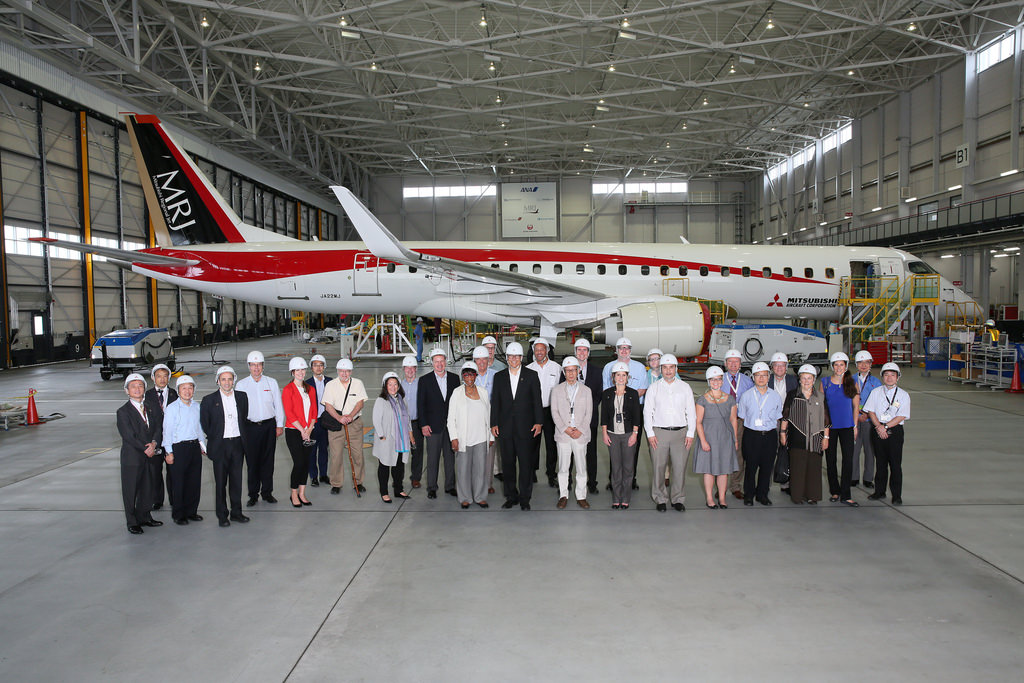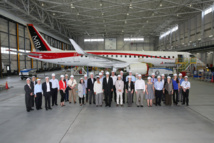The plane took off from Nagoya Airport and returned to the airport an hour later. The manufacturer, Mitsubishi Aircraft Corporation, live-webcasted the flight on its website.
MRJ’s development took seven years. The first sample of the aircraft was presented in October 2014. The company-developer has already got orders for supply of 223 units of the aircraft, including 32 aircraft ordered by Japan Airlines, and 100 machines by regional US carrier Trans.
The first serial MRJ will be produced and sold in June 2017. Mitsubishi aims to sell more than two thousand aircrafts in the competitive market segment, pressing the Canadian manufacturer Bombardier Inc. and the world's second producer of small passenger aircraft Brazilian Embraer SA.
MRJ’s flight range is from 1.8 to 3.7 thousand kilometers. The model is presented in two versions: 76 and 88 passengers. The main advantage of MRJ is efficiency: the aircraft spends 20 percent less fuel than its classmates.
MRJ is the first in more than a half-century attempt to create a serial and commercially profitable Japanese aircraft. Prior to this, Japanese engineers designed and produced the turboprop YS-11. The jet went into production in 1962, but sold less than 200 cars.
Japan's largest automaker Toyota Motor Corp. and the largest trading company Mitsubishi Corp. each own ten percent-packages in the project.
source: reuters.com
MRJ’s development took seven years. The first sample of the aircraft was presented in October 2014. The company-developer has already got orders for supply of 223 units of the aircraft, including 32 aircraft ordered by Japan Airlines, and 100 machines by regional US carrier Trans.
The first serial MRJ will be produced and sold in June 2017. Mitsubishi aims to sell more than two thousand aircrafts in the competitive market segment, pressing the Canadian manufacturer Bombardier Inc. and the world's second producer of small passenger aircraft Brazilian Embraer SA.
MRJ’s flight range is from 1.8 to 3.7 thousand kilometers. The model is presented in two versions: 76 and 88 passengers. The main advantage of MRJ is efficiency: the aircraft spends 20 percent less fuel than its classmates.
MRJ is the first in more than a half-century attempt to create a serial and commercially profitable Japanese aircraft. Prior to this, Japanese engineers designed and produced the turboprop YS-11. The jet went into production in 1962, but sold less than 200 cars.
Japan's largest automaker Toyota Motor Corp. and the largest trading company Mitsubishi Corp. each own ten percent-packages in the project.
source: reuters.com



















